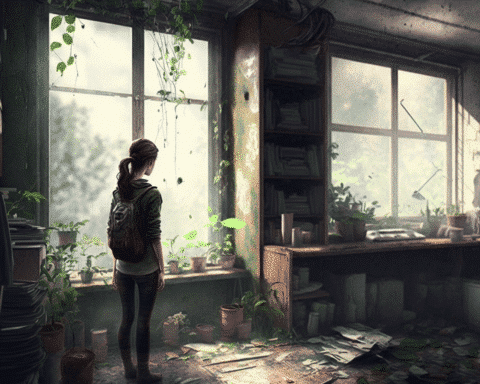In “The Last of Us,” a fungus-induced apocalypse unfolds, revealing the true nature of its characters. Once an ordinary man, Joel is exposed as a survivor capable of brutal violence. Ellie, on the other hand, is a frightened child whose courage wavers.
According to Glenn Stutzky, a former instructor at Michigan State University who taught a course on surviving a zombie apocalypse, the apocalypse doesn’t change people; it reveals them. Apocalyptic stories, like HBO’s adaptation of “The Last of Us,” captivate viewers by challenging their self-concepts and notions of society’s structure and how the future might look.
Apocalyptic narratives provide insight into our true selves, as demonstrated by Stutzky’s disaster behaviour class, which involved a zombie uprising simulation. Students were forced to make difficult decisions, learning about themselves and their instinctual reactions to catastrophes.
Tony M. Vinci, a researcher of post-apocalyptic narratives, suggests that we also yearn for a pre-digital age, craving unmediated connections. The awe-inspiring and terrible visuals in apocalyptic stories like “The Last of Us” keep us enthralled, unable to look away from the destruction.
Apocalyptic myths have existed for centuries, with many ancient cultures featuring rebirth stories following the world’s end. Contemporary apocalyptic narratives, however, often depict bleaker scenarios. These stories, such as “The Last of Us,” can serve as cautionary tales about the potential consequences of our actions.
Real-world apocalypses have occurred throughout history, from the mass murder of Indigenous people during colonization to the transatlantic slave trade. Natural and unnatural disasters remind us that these events are not as far from reality as they may appear on the screen.
Innovative post-apocalyptic stories can offer glimpses of a better world. “The Last of Us” presents a vision of a society where resources and responsibilities are shared and a possible future where the Cordyceps infection might be cured. Such stories prompt audiences to examine their world critically and consider alternatives to the status quo.
As “The Last of Us” continues, viewers will witness the consequences of Joel’s actions and be challenged to imagine the possibilities for a world after the apocalypse.
As the narrative of “The Last of Us” unfolds, it pushes viewers to contemplate the moral dilemmas and ethical choices characters face in a post-apocalyptic world. From deciding whether to save a life at the expense of humanity’s future to navigating complex relationships in a world where trust is scarce, these stories encourage introspection and force us to evaluate our values.
Post-apocalyptic narratives also examine the resilience of the human spirit and the potential for collaboration and rebuilding amidst the chaos. Characters like Ellie, who represents hope and a brighter future, inspire us to consider the role of empathy, courage, and determination in shaping the world we want to see.
Furthermore, these stories challenge the notion of power dynamics and authority, as characters are often forced to question existing structures and explore alternative governance models. Post-apocalyptic narratives present a world stripped of traditional institutions, allowing audiences to envision new societal frameworks built upon shared values and cooperation.
The popularity of apocalyptic stories like “The Last of Us” highlights our fascination with the concept of the world’s end and serves as a mirror, reflecting our deepest fears and aspirations. As we continue engaging with these narratives, we are reminded of the potential for change, growth, and renewal, even in dire circumstances. Through these stories, we can confront our vulnerabilities and strengths while exploring possibilities for a more just and compassionate future.




